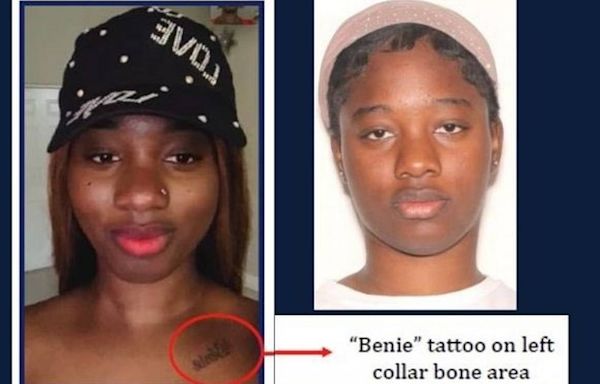Search results
News about Jenny Saint Pierre, Destin Henderson, Harlie Renei Jack
News about Miss Manners, advice columnist, open mic
Also in the news
- Contact the Police Immediately. Provide the police where your loved one is missing with all the information you can. If the person remains missing more than three days, ask the police to place them on the FBI’s National Crime Information Center (NCIC) list as an “endangered adult.”
- Reach Out to the Missing Person’s Friends and Acquaintances. Call other people who are close to your loved one and ask when they last saw him or her. Reach out to anyone who had regular or recent contact with the missing person, such as case managers, coworkers, doctors and neighbors.
- Register Them with the National Missing and Unidentified Persons System (NamUs) Go to the National Missing and Unidentified Persons System and upload information about your loved one.
- Check Nearby Hospitals, Churches, Homeless Shelters and Libraries. Keep in mind that some of these places may have confidentiality restrictions and be unable to confirm if your loved one is there.
The National Missing and Unidentified Persons System (NamUs) is a national centralized repository and resource center for missing, unidentified, and unclaimed person cases across the United States. NamUs helps investigators match long-term missing persons with unidentified remains to resolve cases and bring resolution to families.
- Overview
- Submit a missing person repor
- Contact the person's friends and acquaintance
- Submit their name to the NamUs databas
- Check with local hospital
- Touch base with local public establishment
- Hang up flyers with the person’s fac
- Check the person’s social media account
- Make social media pages to raise awarenes
- Check the person’s phone locatio
Discovering that a friend or loved one is missing is one of the worst experiences a person can go through, but you have more options moving forward than you may think. Contacting law enforcement and filing a report is an essential step, along with retracing the missing individual’s steps and spreading the word about their disappearance. You’re not alone—with this list of tips and starting points, you can stay connected and feel proactive during this unimaginably difficult time.
Stop by the local police station first and file a missing person report. Give as much info about the person as you can, like where they were last seen.
Ask the person’s friends and co-workers if they’ve seen them, and call local hospitals to see if they’ve received any unidentified patients.
Post flyers about the missing individual in well-trafficked areas, and spread the word about their disappearance on social media.
Visit your local police station
as soon as you suspect that the individual is missing. Tell the officers on duty that you’d like to file a missing person report, and provide as much useful info as you can about the individual (e.g., what they look like, what they were wearing, where they were last). Explain how and why their disappearance feels out of the ordinary.
Many cities and states should let you file a missing person right away, but double-check with law enforcement officers to see what the policy in your area is.
Give the police your contact info so they can stay in touch with you in case anything develops.
If at least 72 hours pass and the individual is still missing, make sure that law enforcement passes along their info to the FBI’s National Crime Information Center (NCIC) list.
In the event of child abduction, law enforcement may put out an AMBER Alert to help locate the child more efficiently (especially if the child is in major danger).
Call, text, or meet up with the missing individual’s friends, co-workers, neighbors, or anyone else who crossed paths with them frequently. One of these people might have an idea of where the missing individual was headed or what they were doing around the time they disappeared.
contains thousands of missing and unidentified person cases in the USA. Submitting a person’s name to this database puts their case information in a spot that can be easily accessed and investigated by a more extensive network of criminal justice professionals.
Register on the NamUs website to submit the missing person case. A member of NamUs staff will review and confirm the details of the case before making it live on the database.
If the missing individual got injured but didn’t have any ID on them, hospital personnel might not know who to contact. On the off-chance that this scenario happened, dial up your local hospitals and ask if any unidentified people were checked in recently.
Libraries, churches, and homeless shelters are all possible spots the missing individual could be. Look up the numbers of these local establishments and ask if they’ve seen anyone matching the description of your friend or loved one.
Some places (like a domestic violence shelter) might not be allowed to share who is staying there.
Include 2 recent photos of the individual on your flyer, along with their name, hometown and state, last known location, physical characteristics, car information (if relevant), and a contact number for law enforcement. Print out these copies and hang them up in well-trafficked areas. Save this file as a PDF, too, so it’s easy to send and spread online.
Don’t use your own phone number when
Has the person posted, commented, or liked any posts lately? Check all of their social media profiles to see if there’s any recent activity. A recent post, photo, or comment might shed some light on where they are or what they were last up to.
Dedicate a Facebook page, Twitter/X account, or Instagram profile to the missing individual to help spread the word about their disappearance. Post a digital copy of their missing person flyer, complete with info about their appearance, last known location, and who they can contact with tips.
It may also help to
If the missing person has an iPhone and you previously shared locations, use the “Find My” app to get a better idea of where they last were.
If you share locations on Android (or a different app), check the corresponding location app (like Google Maps) to
figure out where they last were
If the missing person left their phone behind, ask the police what to do next. They might want to look at the phone for their own investigation.
The Missing Persons Center is a 501c3 organization dedicated to finding missing loved ones and bringing answers to their families. We rely on public support to achieve our mission. Our comprehensive approach involves close collaboration with law enforcement, family members, and search and rescue teams. Additionally, we leverage a robust network ...
A missing person is a person who has disappeared and whose status as alive or dead cannot be confirmed as their location and condition are unknown. A person may go missing through a voluntary disappearance, or else due to an accident , crime , death in a location where they cannot be found (such as at sea), or many other reasons.
Nov 22, 2001 · Intense searches for missing Nebraska man Tyler Goodrich turn up nothing. The 35-year-old veteran and father of two who worked at the Nebraska Department of Corrections went missing from his home ...
People also ask
What is a missing person?
How do I find a missing person?
What is the missing persons center?
Who is responsible for a missing person case?
Oct 8, 2018 · The countdown to finding a missing person begins the moment someone concerned for his or her well-being alerts law enforcement. Investigators are essentially working against the clock, as with ...




